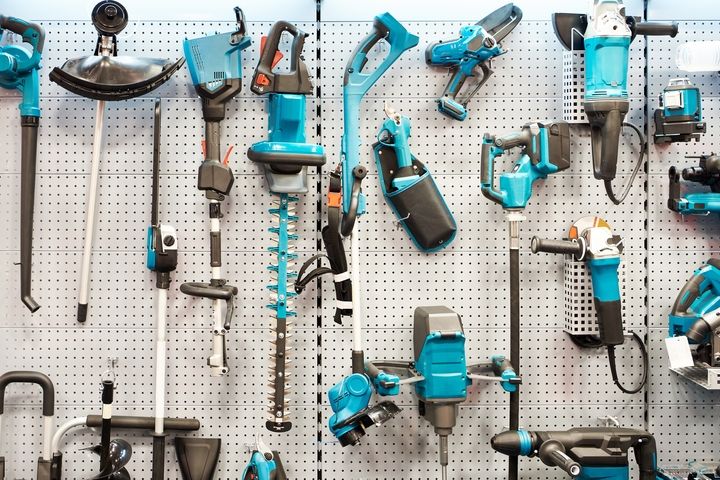
 Storage Tips
Storage TipsBest Practices for Storing Power Tools and Equipment in a Storage Unit
Storing Power Tools and Equipment: Essential Guide for Long-Term Preservation
Whether you're a professional tradesperson or an avid DIY enthusiast, your power tools are valuable investments. Proper storage is crucial not only to maintain these tools’ performance but also to ensure safety, longevity, and ease of access. Improper storage practices can lead to costly repairs or replacements, mechanical issues, and even safety hazards. This guide covers everything from cleaning and prepping to choosing the right storage unit for your tools, offering step-by-step guidance on storing your tools correctly and efficiently.
Importance of Proper Tool Storage
Organized and well-maintained tools save you time, money, and frustration. Proper storage can prevent safety risks, such as electrical shorts or fuel leaks, while helping your tools stay in ready-to-use condition. Here’s a comprehensive approach to safely store your power tools and keep them performing optimally.
Tips for Preventing Rust on Power Tools in Storage
Anyone serious about their tools knows rust is one of the biggest threats to metal components. Moisture exposure leads to rusting, affecting the integrity of drill bits, saw blades, and other metal parts. Here are effective methods to minimize rust risk:
-
Clean and Dry Tools Before Storing: Use a clean, dry cloth to thoroughly wipe down your tools before storing them. This removes any residual moisture that could lead to rust.
-
Apply a Light Oil Coating: After cleaning, apply a thin layer of machine oil or rust-preventive spray to all metal surfaces. This protective layer can help prevent oxidation.
-
Use Silica Gel Packs: Silica gel absorbs moisture, making it an effective choice for preventing rust. Place these packs in toolboxes or storage containers to reduce humidity around your tools.
Preparing Power Tools for Storage: Cleaning and Prepping
Dirt, sawdust, and debris left on tools can attract moisture, clog moving parts, or lead to rust. Before storing your tools, follow these preparation steps:
- Brush Off Dirt and Debris: Use a brush or compressed air to remove any debris.
- Inspect and Replace Damaged Parts: Inspect for worn or broken parts, replace them if necessary, and sharpen blades.
- Lubricate Moving Parts: After cleaning, apply a light lubricant to maintain smooth movement.
- Seal in Plastic Bags with Silica Gel: For tools that are particularly susceptible to moisture, consider placing them in sealable plastic bags with silica gel packs.
Storing Gas-Powered Tools: Managing Fuel and Oil
For gas-powered tools like lawnmowers, chainsaws, or generators, fuel and oil storage is critical to avoid corrosion and damage. Here’s what to keep in mind:
- Drain Fuel Before Storage: Fuel can spoil over time, leading to clogging and corrosion. Drain the fuel tank and run the engine until all fuel is used up.
- Replace with Fresh Oil: Remove old oil, which may turn to sludge if left unused. Refill with clean oil before storage.
Choosing the Right Storage Environment: Is Climate Control Necessary?
If your region experiences high humidity or extreme temperature swings, climate-controlled storage is beneficial. Tools with sensitive electrical components or intricate metal parts are best kept in a stable environment to prevent corrosion, rust, or expansion due to moisture.
- Protect Against Temperature Fluctuations: Heat and cold can warp certain materials or cause condensation that leads to rust.
- Avoid Direct Exposure to the Elements: Place tools in storage units that maintain a controlled climate, especially if you plan to store tools for an extended period.
Protecting Electrical Cords and Batteries
Both electrical cords and batteries are prone to damage if stored improperly. Here are a few practices to extend their lifespan:
- Organize Cords Carefully: Avoid sharply bending or kinking cords. Instead, coil them in loose loops and secure them with ties.
- Store Batteries Separately: Remove batteries from tools before storage. Charge them to about 50% to maintain longevity, and keep them in a protective case.
Selecting Storage Containers and Toolboxes for Long-Term Storage
A good storage system reduces clutter and keeps tools in pristine condition. Here are some options for organizing tools in storage:
- Sturdy Plastic Bins: Plastic bins with tight-sealing lids offer an affordable and effective way to protect tools from dust and moisture.
- Tool Chests and Cabinets: Consider a tool chest or cabinet with drawers for neatly organizing multiple tools.
- Custom Foam Linings: Custom-cut foam linings in storage containers help keep tools securely in place and minimize movement.
Vertical Storage Options for Heavy Tools
If you’re working with limited space, vertical storage is an option for large, bulky tools. However, take precautions to avoid accidental damage.
- Secure Vertical Tools Properly: Use wall-mounted racks for heavy-duty tools that can safely be stored upright.
- Avoid High Stacking: Avoid stacking heavy tools on top of each other, as this increases the risk of tipping or damage.
Inspecting Stored Tools Regularly
Long-term storage requires periodic checks to ensure tools remain in good condition. Schedule inspections every few months to address potential issues early.
- Check for Moisture and Rust: Inspect metal parts for signs of moisture or rust, and apply preventative treatments as necessary.
- Watch for Pest Damage: Rodents can damage cords and other components, so inspect storage units for signs of infestation.
Safety Precautions for Storing Power Tools
Safety is paramount when storing power tools. Follow these guidelines to prevent accidents or equipment damage:
- Store Sharp Tools Securely: Use blade guards for tools with sharp edges, or store them in protective cases to prevent accidental cuts.
- Ventilate Fuel-Powered Tools: Even when drained, fuel-powered tools should be stored in a ventilated area to avoid fume buildup.
- Avoid Stacking Heavy Items: Stacking increases the risk of damage and accidents. Store heavy items on low shelves or racks.
Advantages of Self-Storage Units for Power Tools
Opting for a self-storage unit offers various benefits compared to a cluttered garage or a vulnerable outdoor shed.
- Weather Protection: Self-storage units offer weather protection that reduces the risk of moisture, temperature extremes, and rust.
- Increased Security: A locked, secure storage unit adds an extra layer of protection against theft.
- Space Efficiency: Storing tools offsite frees up garage space, making it easier to keep everything organized.
You can find storage units conveniently located near your home or work, and online research often reveals options with discounts or special rates.
Final Thoughts: Keeping Power Tools in Peak Condition
By following proper storage procedures, you can extend the lifespan of your power tools, minimize risks, and avoid unnecessary expenses. Whether you choose climate-controlled storage or not, consistent organization, routine inspections, and good storage habits will keep your tools ready for use whenever you need them.



